- Home
- Walter Isaacson
Walter Isaacson Great Innovators e-book boxed set Page 36
Walter Isaacson Great Innovators e-book boxed set Read online
Page 36
Lasseter smiled gently. “You have my blessing,” he said.
CHAPTER TWENTY-FOUR
THE RESTORATION
The Loser Now Will Be Later to Win
Amelio calling up Wozniak as Jobs hangs back, 1997
Hovering Backstage
“It’s rare that you see an artist in his thirties or forties able to really contribute something amazing,” Jobs declared as he was about to turn thirty.
That held true for Jobs in his thirties, during the decade that began with his ouster from Apple in 1985. But after turning forty in 1995, he flourished. Toy Story was released that year, and the following year Apple’s purchase of NeXT offered him reentry into the company he had founded. In returning to Apple, Jobs would show that even people over forty could be great innovators. Having transformed personal computers in his twenties, he would now help to do the same for music players, the recording industry’s business model, mobile phones, apps, tablet computers, books, and journalism.
He had told Larry Ellison that his return strategy was to sell NeXT to Apple, get appointed to the board, and be there ready when CEO Gil Amelio stumbled. Ellison may have been baffled when Jobs insisted that he was not motivated by money, but it was partly true. He had neither Ellison’s conspicuous consumption needs nor Gates’s philanthropic impulses nor the competitive urge to see how high on the Forbes list he could get. Instead his ego needs and personal drives led him to seek fulfillment by creating a legacy that would awe people. A dual legacy, actually: building innovative products and building a lasting company. He wanted to be in the pantheon with, indeed a notch above, people like Edwin Land, Bill Hewlett, and David Packard. And the best way to achieve all this was to return to Apple and reclaim his kingdom.
And yet when the cup of power neared his lips, he became strangely hesitant, reluctant, perhaps coy.
He returned to Apple officially in January 1997 as a part-time advisor, as he had told Amelio he would. He began to assert himself in some personnel areas, especially in protecting his people who had made the transition from NeXT. But in most other ways he was unusually passive. The decision not to ask him to join the board offended him, and he felt demeaned by the suggestion that he run the company’s operating system division. Amelio was thus able to create a situation in which Jobs was both inside the tent and outside the tent, which was not a prescription for tranquillity. Jobs later recalled:
Gil didn’t want me around. And I thought he was a bozo. I knew that before I sold him the company. I thought I was just going to be trotted out now and then for events like Macworld, mainly for show. That was fine, because I was working at Pixar. I rented an office in downtown Palo Alto where I could work a few days a week, and I drove up to Pixar for one or two days. It was a nice life. I could slow down, spend time with my family.
Jobs was, in fact, trotted out for Macworld right at the beginning of January, and this reaffirmed his opinion that Amelio was a bozo. Close to four thousand of the faithful fought for seats in the ballroom of the San Francisco Marriott to hear Amelio’s keynote address. He was introduced by the actor Jeff Goldblum. “I play an expert in chaos theory in The Lost World: Jurassic Park,” he said. “I figure that will qualify me to speak at an Apple event.” He then turned it over to Amelio, who came onstage wearing a flashy sports jacket and a banded-collar shirt buttoned tight at the neck, “looking like a Vegas comic,” the Wall Street Journal reporter Jim Carlton noted, or in the words of the technology writer Michael Malone, “looking exactly like your newly divorced uncle on his first date.”
The bigger problem was that Amelio had gone on vacation, gotten into a nasty tussle with his speechwriters, and refused to rehearse. When Jobs arrived backstage, he was upset by the chaos, and he seethed as Amelio stood on the podium bumbling through a disjointed and endless presentation. Amelio was unfamiliar with the talking points that popped up on his teleprompter and soon was trying to wing his presentation. Repeatedly he lost his train of thought. After more than an hour, the audience was aghast. There were a few welcome breaks, such as when he brought out the singer Peter Gabriel to demonstrate a new music program. He also pointed out Muhammad Ali in the first row; the champ was supposed to come onstage to promote a website about Parkinson’s disease, but Amelio never invited him up or explained why he was there.
Amelio rambled for more than two hours before he finally called onstage the person everyone was waiting to cheer. “Jobs, exuding confidence, style, and sheer magnetism, was the antithesis of the fumbling Amelio as he strode onstage,” Carlton wrote. “The return of Elvis would not have provoked a bigger sensation.” The crowd jumped to its feet and gave him a raucous ovation for more than a minute. The wilderness decade was over. Finally Jobs waved for silence and cut to the heart of the challenge. “We’ve got to get the spark back,” he said. “The Mac didn’t progress much in ten years. So Windows caught up. So we have to come up with an OS that’s even better.”
Jobs’s pep talk could have been a redeeming finale to Amelio’s frightening performance. Unfortunately Amelio came back onstage and resumed his ramblings for another hour. Finally, more than three hours after the show began, Amelio brought it to a close by calling Jobs back onstage and then, in a surprise, bringing up Steve Wozniak as well. Again there was pandemonium. But Jobs was clearly annoyed. He avoided engaging in a triumphant trio scene, arms in the air. Instead he slowly edged offstage. “He ruthlessly ruined the closing moment I had planned,” Amelio later complained. “His own feelings were more important than good press for Apple.” It was only seven days into the new year for Apple, and already it was clear that the center would not hold.
Jobs immediately put people he trusted into the top ranks at Apple. “I wanted to make sure the really good people who came in from NeXT didn’t get knifed in the back by the less competent people who were then in senior jobs at Apple,” he recalled. Ellen Hancock, who had favored choosing Sun’s Solaris over NeXT, was on the top of his bozo list, especially when she continued to want to use the kernel of Solaris in the new Apple operating system. In response to a reporter’s question about the role Jobs would play in making that decision, she answered curtly, “None.” She was wrong. Jobs’s first move was to make sure that two of his friends from NeXT took over her duties.
To head software engineering, he tapped his buddy Avie Tevanian. To run the hardware side, he called on Jon Rubinstein, who had done the same at NeXT back when it had a hardware division. Rubinstein was vacationing on the Isle of Skye when Jobs called him. “Apple needs some help,” he said. “Do you want to come aboard?” Rubinstein did. He got back in time to attend Macworld and see Amelio bomb onstage. Things were worse than he expected. He and Tevanian would exchange glances at meetings as if they had stumbled into an insane asylum, with people making deluded assertions while Amelio sat at the end of the table in a seeming stupor.
Jobs did not come into the office regularly, but he was on the phone to Amelio often. Once he had succeeded in making sure that Tevanian, Rubinstein, and others he trusted were given top positions, he turned his focus onto the sprawling product line. One of his pet peeves was Newton, the handheld personal digital assistant that boasted handwriting recognition capability. It was not quite as bad as the jokes and Doonesbury comic strip made it seem, but Jobs hated it. He disdained the idea of having a stylus or pen for writing on a screen. “God gave us ten styluses,” he would say, waving his fingers. “Let’s not invent another.” In addition, he viewed Newton as John Sculley’s one major innovation, his pet project. That alone doomed it in Jobs’s eyes.
“You ought to kill Newton,” he told Amelio one day by phone.
It was a suggestion out of the blue, and Amelio pushed back. “What do you mean, kill it?” he said. “Steve, do you have any idea how expensive that would be?”
“Shut it down, write it off, get rid of it,” said Jobs. “It doesn’t matter what it costs. People will cheer you if you got rid of it.”
“I’ve looked into Newton and
it’s going to be a moneymaker,” Amelio declared. “I don’t support getting rid of it.” By May, however, he announced plans to spin off the Newton division, the beginning of its yearlong stutter-step march to the grave.
Tevanian and Rubinstein would come by Jobs’s house to keep him informed, and soon much of Silicon Valley knew that Jobs was quietly wresting power from Amelio. It was not so much a Machiavellian power play as it was Jobs being Jobs. Wanting control was ingrained in his nature. Louise Kehoe, the Financial Times reporter who had foreseen this when she questioned Jobs and Amelio at the December announcement, was the first with the story. “Mr. Jobs has become the power behind the throne,” she reported at the end of February. “He is said to be directing decisions on which parts of Apple’s operations should be cut. Mr. Jobs has urged a number of former Apple colleagues to return to the company, hinting strongly that he plans to take charge, they said. According to one of Mr. Jobs’ confidantes, he has decided that Mr. Amelio and his appointees are unlikely to succeed in reviving Apple, and he is intent upon replacing them to ensure the survival of ‘his company.’”
That month Amelio had to face the annual stockholders meeting and explain why the results for the final quarter of 1996 showed a 30% plummet in sales from the year before. Shareholders lined up at the microphones to vent their anger. Amelio was clueless about how poorly he handled the meeting. “The presentation was regarded as one of the best I had ever given,” he later wrote. But Ed Woolard, the former CEO of DuPont who was now the chair of the Apple board (Markkula had been demoted to vice chair), was appalled. “This is a disaster,” his wife whispered to him in the midst of the session. Woolard agreed. “Gil came dressed real cool, but he looked and sounded silly,” he recalled. “He couldn’t answer the questions, didn’t know what he was talking about, and didn’t inspire any confidence.”
Woolard picked up the phone and called Jobs, whom he’d never met. The pretext was to invite him to Delaware to speak to DuPont executives. Jobs declined, but as Woolard recalled, “the request was a ruse in order to talk to him about Gil.” He steered the phone call in that direction and asked Jobs point-blank what his impression of Amelio was. Woolard remembers Jobs being somewhat circumspect, saying that Amelio was not in the right job. Jobs recalled being more blunt:
I thought to myself, I either tell him the truth, that Gil is a bozo, or I lie by omission. He’s on the board of Apple, I have a duty to tell him what I think; on the other hand, if I tell him, he will tell Gil, in which case Gil will never listen to me again, and he’ll fuck the people I brought into Apple. All of this took place in my head in less than thirty seconds. I finally decided that I owed this guy the truth. I cared deeply about Apple. So I just let him have it. I said this guy is the worst CEO I’ve ever seen, I think if you needed a license to be a CEO he wouldn’t get one. When I hung up the phone, I thought, I probably just did a really stupid thing.
That spring Larry Ellison saw Amelio at a party and introduced him to the technology journalist Gina Smith, who asked how Apple was doing. “You know, Gina, Apple is like a ship,” Amelio answered. “That ship is loaded with treasure, but there’s a hole in the ship. And my job is to get everyone to row in the same direction.” Smith looked perplexed and asked, “Yeah, but what about the hole?” From then on, Ellison and Jobs joked about the parable of the ship. “When Larry relayed this story to me, we were in this sushi place, and I literally fell off my chair laughing,” Jobs recalled. “He was just such a buffoon, and he took himself so seriously. He insisted that everyone call him Dr. Amelio. That’s always a warning sign.”
Brent Schlender, Fortune’s well-sourced technology reporter, knew Jobs and was familiar with his thinking, and in March he came out with a story detailing the mess. “Apple Computer, Silicon Valley’s paragon of dysfunctional management and fumbled techno-dreams, is back in crisis mode, scrambling lugubriously in slow motion to deal with imploding sales, a floundering technology strategy, and a hemorrhaging brand name,” he wrote. “To the Machiavellian eye, it looks as if Jobs, despite the lure of Hollywood—lately he has been overseeing Pixar, maker of Toy Story and other computer-animated films—might be scheming to take over Apple.”
Once again Ellison publicly floated the idea of doing a hostile takeover and installing his “best friend” Jobs as CEO. “Steve’s the only one who can save Apple,” he told reporters. “I’m ready to help him the minute he says the word.” Like the third time the boy cried wolf, Ellison’s latest takeover musings didn’t get much notice, so later in the month he told Dan Gillmore of the San Jose Mercury News that he was forming an investor group to raise $1 billion to buy a majority stake in Apple. (The company’s market value was about $2.3 billion.) The day the story came out, Apple stock shot up 11% in heavy trading. To add to the frivolity, Ellison set up an email address, [email protected], asking the general public to vote on whether he should go ahead with it.
Jobs was somewhat amused by Ellison’s self-appointed role. “Larry brings this up now and then,” he told a reporter. “I try to explain my role at Apple is to be an advisor.” Amelio, however, was livid. He called Ellison to dress him down, but Ellison wouldn’t take the call. So Amelio called Jobs, whose response was equivocal but also partly genuine. “I really don’t understand what is going on,” he told Amelio. “I think all this is crazy.” Then he added a reassurance that was not at all genuine: “You and I have a good relationship.” Jobs could have ended the speculation by releasing a statement rejecting Ellison’s idea, but much to Amelio’s annoyance, he didn’t. He remained aloof, which served both his interests and his nature.
By then the press had turned against Amelio. Business Week ran a cover asking “Is Apple Mincemeat?”; Red Herring ran an editorial headlined “Gil Amelio, Please Resign”; and Wired ran a cover that showed the Apple logo crucified as a sacred heart with a crown of thorns and the headline “Pray.” Mike Barnicle of the Boston Globe, railing against years of Apple mismanagement, wrote, “How can these nitwits still draw a paycheck when they took the only computer that didn’t frighten people and turned it into the technological equivalent of the 1997 Red Sox bullpen?”
When Jobs and Amelio had signed the contract in February, Jobs began hopping around exuberantly and declared, “You and I need to go out and have a great bottle of wine to celebrate!” Amelio offered to bring wine from his cellar and suggested that they invite their wives. It took until June before they settled on a date, and despite the rising tensions they were able to have a good time. The food and wine were as mismatched as the diners; Amelio brought a bottle of 1964 Cheval Blanc and a Montrachet that each cost about $300; Jobs chose a vegetarian restaurant in Redwood City where the food bill totaled $72. Amelio’s wife remarked afterward, “He’s such a charmer, and his wife is too.”
Jobs could seduce and charm people at will, and he liked to do so. People such as Amelio and Sculley allowed themselves to believe that because Jobs was charming them, it meant that he liked and respected them. It was an impression that he sometimes fostered by dishing out insincere flattery to those hungry for it. But Jobs could be charming to people he hated just as easily as he could be insulting to people he liked. Amelio didn’t see this because, like Sculley, he was so eager for Jobs’s affection. Indeed the words he used to describe his yearning for a good relationship with Jobs are almost the same as those used by Sculley. “When I was wrestling with a problem, I would walk through the issue with him,” Amelio recalled. “Nine times out of ten we would agree.” Somehow he willed himself to believe that Jobs really respected him: “I was in awe over the way Steve’s mind approached problems, and had the feeling we were building a mutually trusting relationship.”
Amelio’s disillusionment came a few days after their dinner. During their negotiations, he had insisted that Jobs hold the Apple stock he got for at least six months, and preferably longer. That six months ended in June. When a block of 1.5 million shares was sold, Amelio called Jobs. “I’m telling people that the s
hares sold were not yours,” he said. “Remember, you and I had an understanding that you wouldn’t sell any without advising us first.”
“That’s right,” Jobs replied. Amelio took that response to mean that Jobs had not sold his shares, and he issued a statement saying so. But when the next SEC filing came out, it revealed that Jobs had indeed sold the shares. “Dammit, Steve, I asked you point-blank about these shares and you denied it was you.” Jobs told Amelio that he had sold in a “fit of depression” about where Apple was going and he didn’t want to admit it because he was “a little embarrassed.” When I asked him about it years later, he simply said, “I didn’t feel I needed to tell Gil.”
Why did Jobs mislead Amelio about selling the shares? One reason is simple: Jobs sometimes avoided the truth. Helmut Sonnenfeldt once said of Henry Kissinger, “He lies not because it’s in his interest, he lies because it’s in his nature.” It was in Jobs’s nature to mislead or be secretive when he felt it was warranted. But he also indulged in being brutally honest at times, telling the truths that most of us sugarcoat or suppress. Both the dissembling and the truth-telling were simply different aspects of his Nietzschean attitude that ordinary rules didn’t apply to him.
Exit, Pursued by a Bear
Jobs had refused to quash Larry Ellison’s takeover talk, and he had secretly sold his shares and been misleading about it. So Amelio finally became convinced that Jobs was gunning for him. “I finally absorbed the fact that I had been too willing and too eager to believe he was on my team,” Amelio recalled. “Steve’s plans to manipulate my termination were charging forward.”
Jobs was indeed bad-mouthing Amelio at every opportunity. He couldn’t help himself. But there was a more important factor in turning the board against Amelio. Fred Anderson, the chief financial officer, saw it as his fiduciary duty to keep Ed Woolard and the board informed of Apple’s dire situation. “Fred was the guy telling me that cash was draining, people were leaving, and more key players were thinking of it,” said Woolard. “He made it clear the ship was going to hit the sand soon, and even he was thinking of leaving.” That added to the worries Woolard already had from watching Amelio bumble the shareholders meeting.

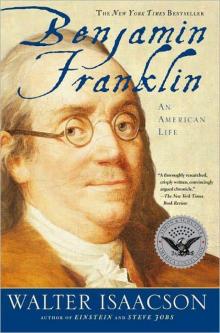 Benjamin Franklin: An American Life
Benjamin Franklin: An American Life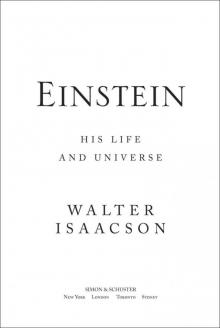 Einstein: His Life and Universe
Einstein: His Life and Universe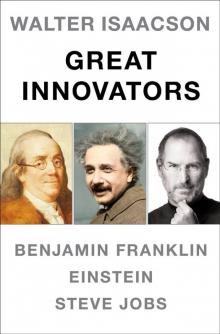 Walter Isaacson Great Innovators e-book boxed set
Walter Isaacson Great Innovators e-book boxed set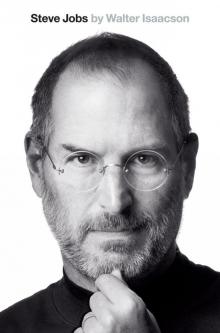 Steve Jobs
Steve Jobs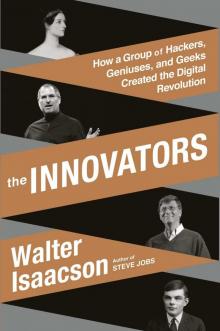 The Innovators
The Innovators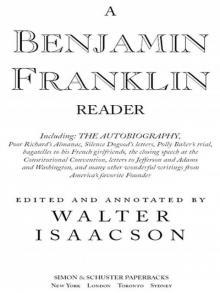 A Benjamin Franklin Reader
A Benjamin Franklin Reader